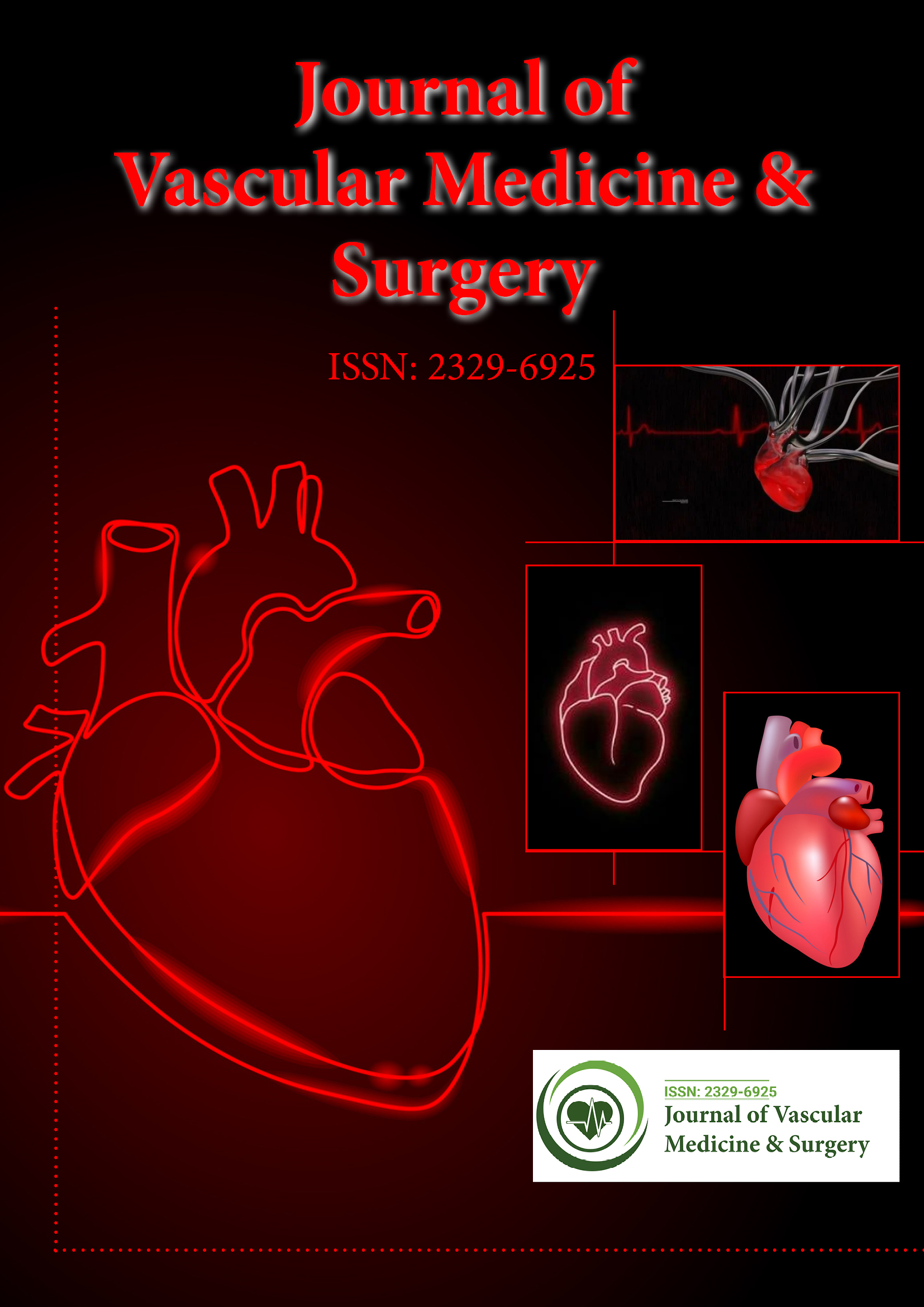Indexed In
- Open J Gate
- Academic Keys
- RefSeek
- Hamdard University
- EBSCO A-Z
- OCLC- WorldCat
- Publons
- Euro Pub
- Google Scholar
- SHERPA ROMEO
Useful Links
Share This Page
Journal Flyer

Open Access Journals
- Agri and Aquaculture
- Biochemistry
- Bioinformatics & Systems Biology
- Business & Management
- Chemistry
- Clinical Sciences
- Engineering
- Food & Nutrition
- General Science
- Genetics & Molecular Biology
- Immunology & Microbiology
- Medical Sciences
- Neuroscience & Psychology
- Nursing & Health Care
- Pharmaceutical Sciences
Prospective - (2021) Volume 0, Issue 0
Editorial on Cardiac Surgery in India during the COVID Period
Botcha Venkata Sai Sravani*Received: 04-Jun-2021 Published: 25-Jun-2021, DOI: 10.35248/2329-6925.21.s6.001
Editorial Note
The unexpected occurrence of the COVID-19 pandemic has thrown normal life out of drugs and there seems to be no immediate end in view. Normal life has changed and therefore the role of cardiac surgery during this point remains evolving. Potential of hospital beds, possible unnecessary exposure of hospital staff to infection, and over utilization of scarce personal protection equipment (PPE) resources are problems with concern. Also, we actually don't know yet what's the added risk of a COVID-19 infection to a cardiac surgical patient.
The COVID pandemic remains evolving in India. We aren't yet officially within the community transmission phase and exponential growth has still not occurred.
Testing for COVID Before Surgery
Mandatory testing for COVID altogether patients coming for surgery is that the ideal situation. But within the current scenario, testing kit availability is a problem. One will need to pass epidemiological factors to try to testing. However, we still don't know what should be the perfect testing protocol because the nasopharyngeal polymerase chain reaction (PCR) swab are often negative thanks to variety of reasons, including improper technique of sampling, low viral load, or mutations within the viral genome. The worth of antibody tests is additionally being evaluated by the Indian Council of Medical Research (ICMR). Non-contrast computerized tomography (CT) chest screening for ground glass opacities as a marker for COVID disease has also been utilized in some centres and therefore the validity and feasibility of this test as a screening tool also are yet to be validated.
Improving Patient Communication
In these distressing times for both patients and doctors, open lines of communication should be established with patients in whom surgery is deferred in view of their elective status. Proper explanation of the current situation and the need to defer surgery should be explained including the risk to the patient. Embracing telemedicine in oneâ??s institution will facilitate this new mode of following up patients.
Formulating an Institution-Specific Pathway
Stratification of patients should take into consideration COVID wave, institution preparedness, and patient risk. We feel that within the current scenario, one should only be doing really indicated procedures which would broadly entail arteria coronaria bypass grafting (CABG), where there's tight coronary disease with a big area of myocardium in danger, symptomatic severe stenosis , valve lesions in medically refractory coronary failure and endocarditis in failure or high risk for embolism, and symptomatic aortic aneurysms with risk of rupture.
In the early phase I clinical trial of the COVID pandemic, which we are currently in, we will probably plow ahead with these above-mentioned procedures, with some latitude in patients being operated on because the disease burden is low. However, it's probably advisable to use some sort of PPE just like the N95 mask. Phase 1 are often defined by a no or low COVID burden within the hospital.
Phase II is when the COVID burden within the hospital is on the upswing and ICU and ventilated patients are increasing daily. At now, hospital transmission of the disease becomes more of an opportunity then logically; criteria to work should be stricter and more justifiable.
Phase III is when COVID burden is nearing or at full capacity of the hospital. At this stage, ICU beds and ventilators are going to be at a premium. At this stage, one should really be operating on patients who would die if surgery isn't performed like acute an aortic dissection, Coronary Artery Disease (CAD) with rest angina despite maximal medication and not amenable to Percutaneous Coronary Intervention (PCI), valve patients in medically refractory failure, and ruptured or impending rupture aortic aneurysms.
Citation: Sravani BVS (2021) Editorial on Cardiac Surgery in India during the COVID Period. J Vasc Med Surg S6:001.
Copyright: © 2021 Sravani BVS. This is an open-access article distributed under the terms of the Creative Commons Attribution License, which permits unrestricted use, distribution, and reproduction in any medium, provided the original author and source are credited.

